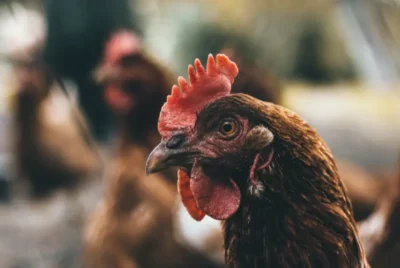Exploring Brahma Chickens: The Ultimate Know-It-All Guide
Owning and raising Brahma chickens can be a rewarding experience, but it’s not without its challenges. Are you struggling to understand their unique needs and traits? Are you perplexed about their feeding habits, health issues, or egg-laying patterns? Or perhaps you’re overwhelmed by setting up the perfect coop and ensuring they have ample space to roam.
Don’t worry, you’re not alone. Many potential and new Brahma chicken owners face these common dilemmas. That’s why we’ve created this guide to answer all your questions, alleviate your worries, and help you become a successful Brahma chicken owner.
Table of Contents
What are Brahma Chickens?
Brahma chickens are indeed a large, robust breed known for their versatility and striking appearance. Their considerable size, often reaching up to 18 pounds for roosters and 14 pounds for hens, has earned them the moniker “King of All Poultry”.
This remarkable size, combined with their strength and hardiness, make them a popular choice for both small-scale backyard farming and larger commercial operations.
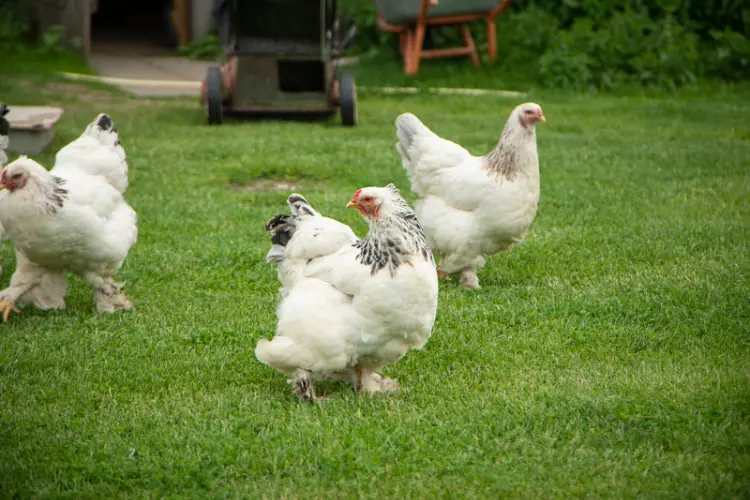
Their utility extends beyond just their size. Brahma chickens are a dual-purpose breed, meaning they are valuable both for their meat production capabilities and egg-laying.
In addition to their practical uses, Brahma chickens are often prized for their beauty because of their distinctive and attractive appearance. Brahma chickens also stand out for their temperament. This makes them an excellent choice for beginners in poultry farming or for families looking for a pet chicken.
Brahma Chicken Breed History
The Brahma chicken, recognized for its towering stature and unique appearance, has been an esteemed breed since the 19th century, with the Light and Dark Brahma featured in the first British Poultry Standard published by the official Poultry Club in 1865.
They were further recognized by the American Poultry Association in 1874, followed by the Buff Brahma in 1924. Standing nearly as tall as the Jersey Giant, a Brahma can reach heights of around 30 inches, presenting a striking ‘V’ shape due to its long, deep, and wide body.
Moreover, during a significant meeting of poultry judges in Boston in 1852, a consensus was reached to christen the breed “Brahmapootra.” However, over time, this name evolved into the more concise and recognizable “Brahma.” This decision marked an important milestone in the breed’s history and solidified its identity as the Brahma chicken we know today.
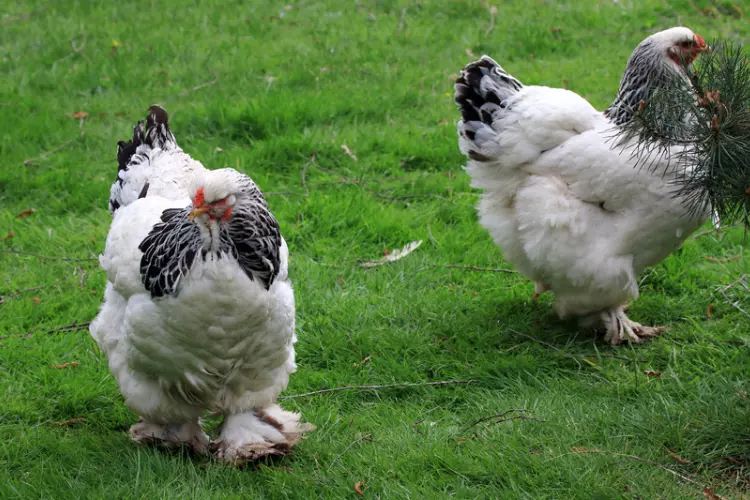
Pros and Cons of Owning Brahma Chickens
Pros:
- As a dual-purpose chicken, they are great for both egg and meat production. Their large size makes them an excellent source of meat, and while not the most prolific layers, they do produce a steady supply of eggs.
- Known for their gentle and docile temperament, Brahma chickens are ideal for families with children.
- Available in a range of colors – light, dark, and buff – they add variety and beauty to your poultry flock.
- With their huge size, feathered feet and majestic carriage, Brahmas are quite a sight to behold.
- Unlike many chicken breeds, Brahmas can lay eggs throughout the winter, ensuring a steady supply when others may not be producing.
Cons:
- One downside to Brahmas is their late maturity. It can take up to 7 months before they start laying, which is later than many other breeds.
- Given their large size, Brahmas can eat a significant amount of feed, leading to a higher feeding cost.
- If not adequately fed, Brahmas can become aggressive towards their flock mates in their search for food. Proper feeding can help prevent this behavior.

Physical Appearance and Feather Patterns
The Brahma chicken, often known as the Giant Brahma Chicken due to its substantial size, has an imposing presence primarily due to its dense feathering. The bird possesses a long, deep, and wide body complemented by strong wings, although its weight significantly limits its flight abilities.
The feathers are closely held together, resulting in a dense yet fluffy plumage that extends down the legs, covering the two outer toes. Their heads are large, accompanied by a slightly overhanging brow or ‘beetle brow’ that lends the bird an intimidating demeanor.
Their facial features include a pea comb and a short but robust beak. Sexing these birds can be challenging, with definitive signs like the development of hackle and sickle feathers often not becoming apparent until they’re 5 months old or even older. As a general rule, the pullets tend to feather in quicker, and the boys develop larger combs and wattles and display a more curious nature.
Feather Colors
Brahma chickens have distinctive and striking feather patterns, with three primary recognized varieties: Light, Dark, and Buff.
- The Light Brahma presents a beautiful contrast of black and white. The body is primarily white with a grayish undertone. Black striping adorns the hackle feathers, with some striping also found in the saddle area. The tail is black with white-laced covert feathers.
- Dark Brahmas have a more complex pattern. Males should exhibit silver hackles and saddle feathers striped with black and solid silver in the shoulder area, with a solid black tail, breast, and body. Hens display black hackles with slight gray penciling and white lacing, and their body, breast, back, and wings are medium gray with black penciling. Achieving the best coloring in Dark Brahmas often requires a breeding strategy known as ‘double mating.’
- The Buff Brahma pattern closely mirrors the Light but with a warm, buff color replacing the white. This rich coloration has made the Buff Brahma a favorite among many enthusiasts.
Size and Weight
Standing at an imposing 30 inches high, the Brahma chicken’s considerable size can be quite intimidating, especially to small children. While its ancestors from the 1800s were even larger, today’s Brahma roosters weigh around 10 pounds and Brahma hens tend to weigh approximately 8 pounds.
Despite their large size, they are known for their gentle disposition. There is a smaller variety known as the Bantam Brahmas, with the males weighing about 38 ounces and the females slightly less at 34 ounces, providing a less intimidating option for those looking for the characteristics of a Brahma in a more manageable size.
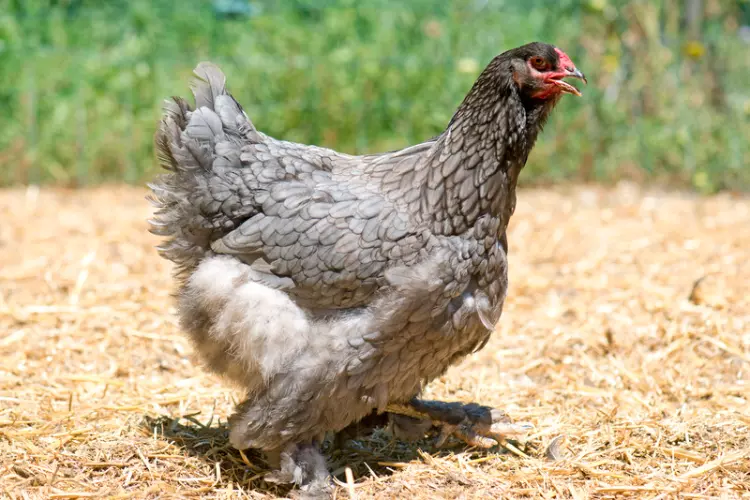
Personality and Temperament
Known for their gentle and tranquil demeanor, Brahma chickens are among the most laid-back breeds available. Their large size and placid nature make them unflappable, and they do not like to engage in fights or disputes with other birds. Their size often places them high in the pecking order, dissuading smaller breeds from causing any bother.
Brahma chickens exhibit a docile and friendly attitude toward humans. While they may not be classified as lap birds due to their size, they certainly won’t shy away from seeking treats or displaying affection. Despite their imposing stature, which might initially intimidate small children, these chickens can quickly endear themselves through their calm demeanor.
With a few gentle interactions, even the youngest members of the family can grow to appreciate these remarkable birds.
Noise Levels
Brahma chickens are quiet and unobtrusive, typically making noise only for their daily “egg song” or to sound an alarm in case of a predator. These rare instances of noise contribute to the overall peaceful and gentle demeanor of this breed.
Their quiet nature makes Brahmas an ideal choice for urban settings, as they are less likely to disturb neighbors with excessive noise. However, it’s important to remember that these large birds require ample space to roam comfortably, even in an urban environment. Providing them with the space they need will contribute to their overall happiness and well-being.
Egg Laying Production
While Brahma hens may take a bit longer to start laying eggs, often not until around 7 months of age, their egg production is generally consistent and reliable once they begin. You can expect Brahma chickens lay 3-4 medium-sized brown eggs each week from a Brahma hen.
What makes Brahma chickens particularly unique is their preference for laying eggs in cooler weather. When other chicken breeds start to decrease their egg production during the colder months, Brahmas actually begin their laying cycle from October through March, ensuring a consistent supply of eggs throughout the winter.
Brahmas are generally not known for their broodiness, but those that do exhibit this trait often make very determined and attentive mothers, faithfully sitting on their eggs until hatching. However, due to their large size, it’s advisable to monitor newly hatched chicks closely to ensure they don’t accidentally get trampled by their mother.
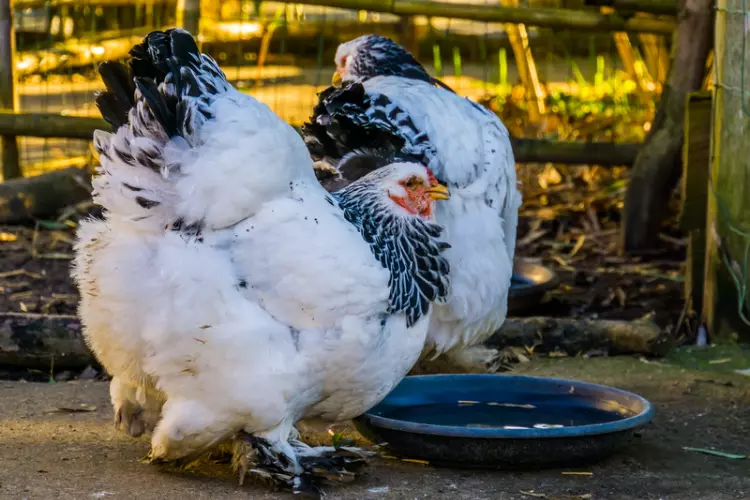
Common Health Issues and Care
Brahma chickens, despite their many strengths, do face a few health concerns that prospective owners should be aware of.
Bumblefoot
Due to their size and weight, Brahmas are more prone to developing bumblefoot, an infection that occurs when bacteria enter through an irritated or injured foot pad. Regular foot inspections and maintaining clean living conditions can help prevent this issue.
Overheating
Brahmas are more suited to cooler climates due to their heavy down layer and large body size. They can struggle with high heat, particularly in warm climates during summer.
To help your Brahmas during hotter months, make sure they have access to shade and plenty of fresh, clean water. If feasible, you could also consider bringing them inside for a few hours to offer respite from the heat.
Risk of Frostbite
The beautiful feathering on the Brahma’s feet can potentially pose a risk. While it adds to their majestic look, these feathers can become caked with mud, especially during winter. If these feathers freeze, it can result in painful frostbite.
In severe cases, this could even necessitate the surgical removal of parts of their toes. If your Brahmas have muddy feet in cold weather, ensure you clean them and monitor the birds closely.
Poultry Setup and Roaming
- Coop Space: Given their size, Brahmas need more space than an average chicken. We recommend providing at least 5-6 square feet per bird inside the coop. Providing less space can lead to anti-social behaviors like pecking and feather picking due to stress and overcrowding.
- Roosting Space: Brahmas should have about 8-10 inches of roosting space each. Because these hefty birds struggle to fly, the roosts should be fairly low, ideally between 12-18 inches high. If the roosts are too high, there’s a risk of foot or leg injuries when the birds hop down.
- Nesting Boxes: While Brahmas can fit into a standard 12″x12″ nesting box, they would appreciate a larger 14″x14″ box. This gives them some extra space to maneuver comfortably. Like the perches, nesting boxes should also be low to the ground to prevent injury.
- Outdoor Requirements: Brahmas can tolerate confinement, but they need plenty of room in their pen—around 12-14 square feet per bird. Your pen’s flooring should ideally be stone or sand to prevent feathered feet from getting muddy, which can lead to foot problems.
- Free Range: Brahmas thrive when they can roam freely. If you have the space, try to let them free range. They will enjoy the freedom and the variety it brings. Also, their large size makes them less likely to be prey to hawks, making free-ranging a safer option for adult Brahmas.
Feeding Requirement
Brahmas thrive when they are free-fed, as they have large appetites. A 16% layer feed is suitable for most of the year, with a slight increase in protein needed during molting. Rationing feed can be challenging, so it is recommended to provide a free-feed option.
When Brahmas get hungry, they may display aggressive behavior towards other flock members, so it is better to keep them fed and content.
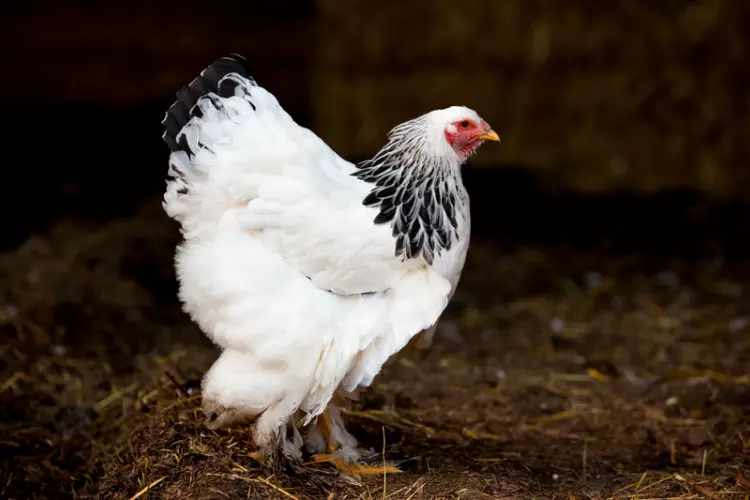
Quick Tips in Raising a Brahma Breed
- Allow Room to Roam: While Brahmas are slower-moving chickens, they still appreciate space for exploration and foraging. If free-ranging is not possible, consider a coop with an attached run. A covered run provides protection from sun and rain. Ensure they have access to water, shade, and ample room to move around, especially in hot weather.
- Maintain a Clean Coop: Regularly clean and sanitize the coop, particularly because the feathering on Brahmas’ legs can get dirty. When raising chickens, a clean coop not only keeps them healthier but also ensures their happiness. Remove excess moisture, food scraps, debris, waste materials, and droppings from other animals to prevent diseases and parasites like bumblefoot.
- Provide a Secure and Spacious Coop: Ensure your coop offers protection from predators. If it has an attached run, make sure you can secure the chickens inside the coop at night for added safety. Since Brahmas are larger than most breeds, provide extra space in the coop to prevent overcrowding and make them feel comfortable.
- Spend Time with Them: Brahmas are known for their friendly nature, so spend time with them, especially when they are young. Handle and talk to them frequently to help them get used to you and establish trust. Over time, they may become comfortable eating out of your hand or approaching you willingly.
FAQ
Is the Brahma chicken considered the biggest chicken breed?
Brahma chicken is not considered the biggest chicken breed. The Jersey Giant chicken is typically considered the largest chicken breed. However, the Brahma chicken is also known as a very large breed, and it often gets mistaken as the largest due to its height and impressive feathering.
Do all Brahma chickens possess a large size?
Not all individual Brahma chickens possess a large a size or will reach the upper size range typical for the breed, as this can vary based on factors like diet, overall health, and genetics.
Conclusion
Brahma chickens are a unique, multifaceted breed offering a mix of practical benefits and aesthetic appeal that captivates breeders and poultry enthusiasts alike. Despite their impressive size and imposing presence, they are remarkably gentle and adaptable, making them an excellent choice for both experienced and novice backyard chicken keepers.
Regardless of whether your interest lies in their egg production, their striking visual appeal, or their docile personalities, Brahma chickens undoubtedly offer a rewarding and enriching experience to their owners. Through this guide, one comes to fully appreciate the unique blend of qualities that truly make Brahma chickens the “King of All Poultry.”


